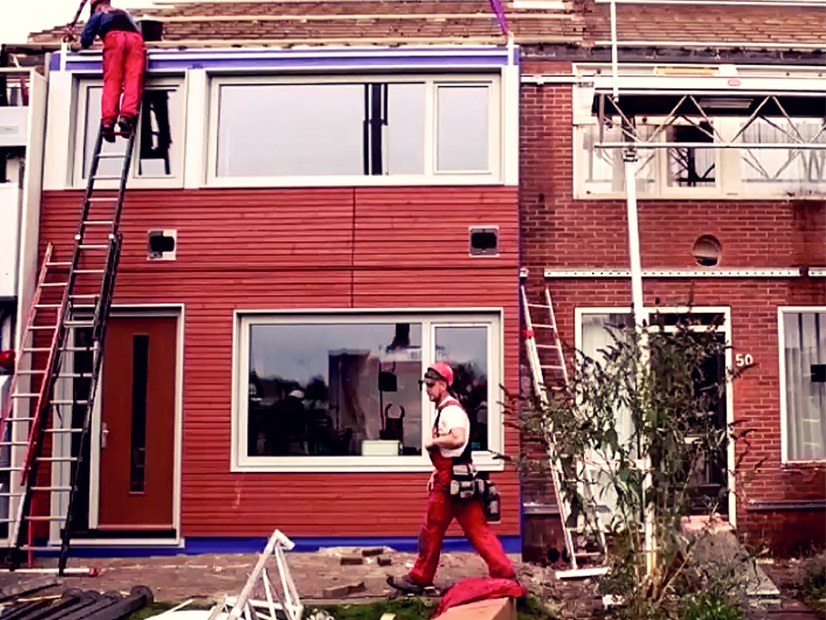New York is increasing the number of affordable and multifamily housing units that can apply for a net-zero retrofit project that insulates a building from the outside without temporarily displacing residents.
The RetrofitNY initiative can wrap an existing building in a new, energy efficient sweater, with panels that are prefabricated, highly insulated and air sealed, according to Greg Hale, senior adviser of energy efficiency markets at the New York State Energy Research and Development Authority.
“The idea is to take an existing building and turn it into a net-zero building with the residents in place, which is a big deal,” Hale said at the BuildingEnergy Boston conference Friday. If residents are displaced during retrofits, decarbonizing the building sector would be too costly for property owners and managers, he added.
NYSERDA recently opened applications for its second fall pilot program after initiating the first round of projects in Brooklyn through the Riseboro Community Partnership, which manages affordable housing developments in the city.
New York’s Climate Leadership and Community Protection Act requires every electricity generation system to be 100% emission free by 2040, and a local law in New York City requires buildings greater than 25,000 square feet to meet specific GHG emission limits starting as early as 2024.
But over 70% of New York’s GHG emissions come from buildings, and tens of thousands of those buildings need to be retrofitted with new energy efficient technologies for the state to meet these climate mandates.
RetrofitNY adapted a European model called Energiesprong, which originally launched in the Netherlands and spread to the U.K., France, Germany and Italy.
The building envelope panels for the retrofit are designed with laser scans of the building that are downloaded into computer-aided design software. The schematics are processed and sent to modular labs for construction.
The panels come with doors and windows already installed, so RetrofitNY only needs to remove existing doors and windows and put the new panels in place.
“In the Netherlands, they can do a row house in three days,” Hale said.
The project in Brooklyn used an exterior insulation finishing system with new ducts for energy efficient heating and cooling integrated into the new façade so architects didn’t have to install the ducts internally and disrupt residents.
“There are lots of prefabricated panel factories in the U.S., but they are all focused on new construction,” Hale said. Pricing panels for existing buildings at a lower cost than panels for new buildings would encourage net-zero retrofits over development, he added.
And panels for existing buildings require less structural elements than panels for a new building.
Hale said he is approaching building and large property portfolio owners to find out if they would participate in the program if a product was available that achieves RetrofitNY’s goals at the same cost level as existing construction panels. So far, 396,000 units have signed on, though half of them are owned by the New York City Housing Authority.
Another 32 building owners, comprising 200,000 units, also responded positively, Hale said.
But the idea is not without roadblocks. Much of the housing stock in New York is older, and historical preservation automatically discounts an external retrofit solution, Hale said.
“There are some techniques, but in the end, there are going to be some buildings where we just need to provide enough heat to manage their leaky envelope,” he said.

